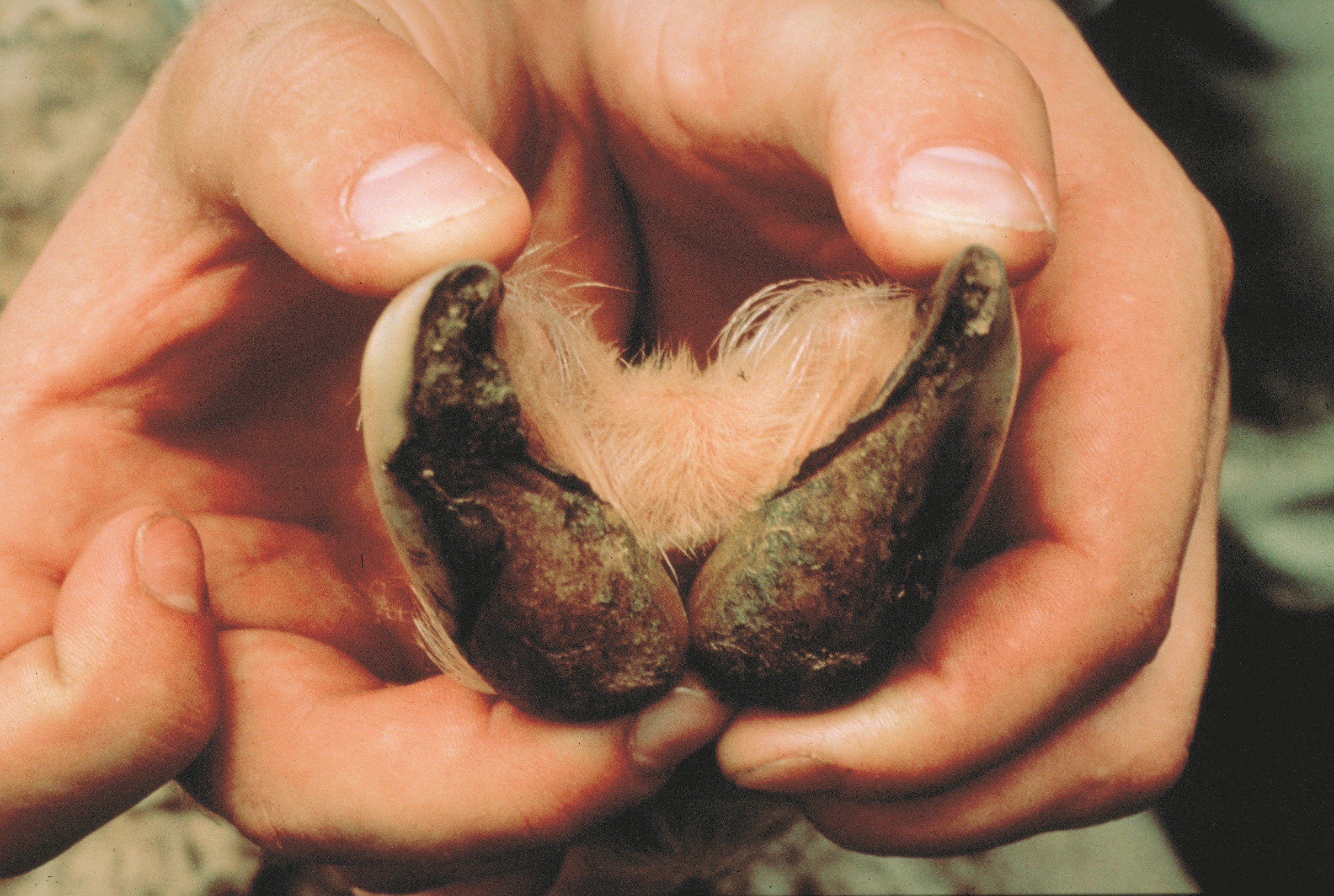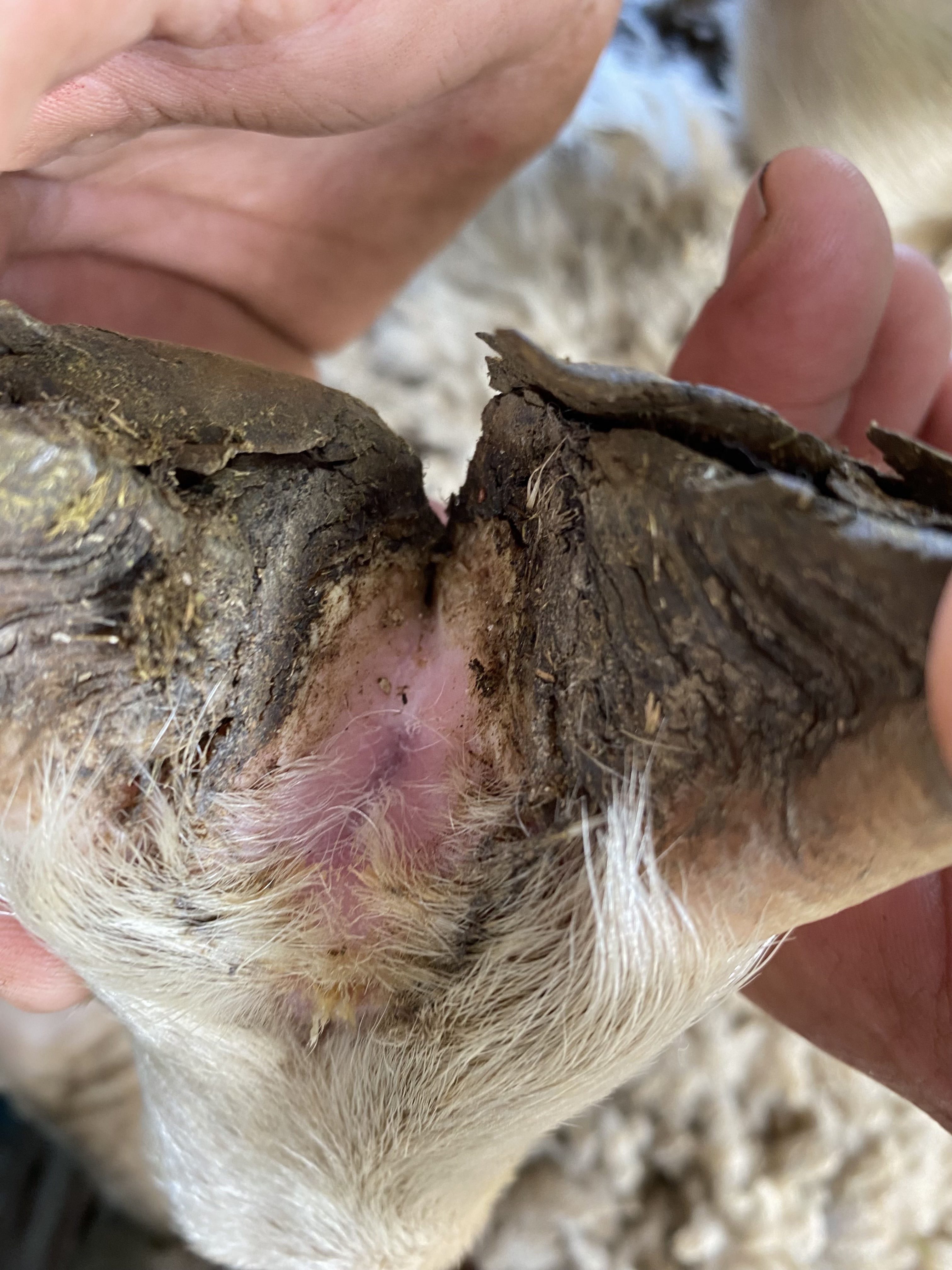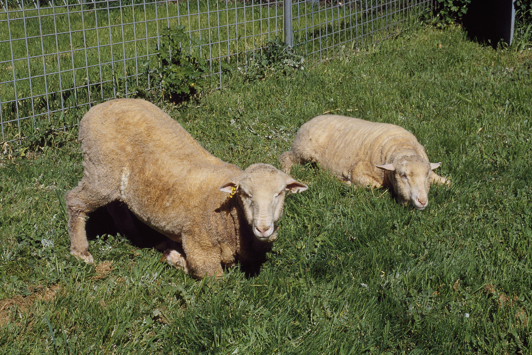Footrot is a foot disease of sheep and goats caused by a contagious, bacterial infection. There are two forms of footrot: virulent footrot and benign footrot. Each are caused by an infection with different strains of the bacterium, Dichelobacter nodosus. Both forms of footrot are reportable in Western Australia. The main difference between virulent and benign footrot is the severity of the disease. A flock may have both virulent and benign strains of the bacteria present at the same time. You can’t tell the difference between benign and virulent footrot without a laboratory test.
Footrot is present in many sheep and goat producing countries with the ideal environmental conditions for the Dichelobacter nodosus bacteria. Dichelobacter nodosus requires warm, moist conditions for multiplication and therefore most commonly occurs in temperate rainfall areas of Australia (predominately NSW, South Australia, Western Australia, Victoria and Tasmania with sporadic occurrences in Queensland). In hot, dry conditions, the bacteria die (benign) or are suppressed (virulent). The bacteria can only survive away from the foot for a maximum of 14 days.
Footrot regulations vary between states regarding diagnosis and management.
The department implements the Western Australian Footrot Control Program at the request of industry, to limit the negative financial and welfare impacts of virulent footrot in Western Australia. Industry funds the Footrot Control Program activities via the Sheep and Goats Industry Funding Scheme.
Sheep and Goats Industry Funding Scheme
Border controls and post-entry requirements are also in place to reduce the likelihood of introducing virulent footrot from interstate. See:
Importing livestock into Western Australia
Post-entry requirements for imported livestock
Footrot starts as inflammation (reddening) of the skin between the toes, accompanied by moisture and loss of hair. Generally, most or all feet are affected. As lesions progress, the signs increase in severity, including:
- loss of hair
- reddening, moisture
- creamy moist material
And may progress to:
- separation or under-running of horny material at the junction of the skin and the horn of the hoof, starting at the heel.
- a rotten horn smell, distinctive to footrot, when toes are pulled apart.
- only chronically affected sheep will show signs of lameness.

Photo: Normal hoof

Photo: Footrot lesions showing interdigital hair loss, moisture, inflammation and damage to the soft horn of the inner hoof wall
Footrot must be differentiated from other diseases that cause lameness, inflammation and lesions on the feet of sheep and goats. These diseases include foot abscess, and scabby mouth. More than one of these diseases may occur in an animal at the same time.
Lameness in several animals should always be checked by a veterinarian, as the exotic disease foot-and-mouth disease can also present similarly to footrot.
If you suspect footrot, see signs of disease consistent with footrot in your sheep or goats, you must report it. The ways you can do this are:
- Speak with your local veterinarian
- Speak with your closest department field veterinarian
- Call the 24/7 Emergency Animal Disease hotline on 1800 675 888.
Early detection enables rapid investigation and control. Flocks diagnosed with virulent footrot are issued a regulatory notice which restricts movements of sheep and goats from these properties until the infection has been eradicated. See Western Australian Footrot Control Program for more information.
Reporting helps protect against potential economic damage to individual producers and safeguards the future of our significant agricultural industry.
The department provides subsidies for disease investigations in livestock where the signs are unusual or affecting several animals in the group. Ask your veterinarian about the Significant Disease Investigation program.
Infected sheep/goats shed bacteria into the ground. If the ground temperature is above 10̊C and moist (ideal environmental conditions), bacteria may survive in the environment for up to 14 days. Sheep/goats that pass over infected ground and have a point of entry for the bacteria (abscess, injury, grass seeds, wet skin between digits) may become infected.
Mechanical transmission from boots and vehicles is unlikely but possible; good on farm biosecurity practices are recommended to reduce the risk.
The greatest risk of introducing footrot into your flock is by buying infected stock or having infected stray stock mix with your flock. Sensible precautions to avoid this include:
- buying direct from properties with a known health status
- inspecting the feet of animals before buying
- asking for a Sheep Health Statement
- keeping newly introduced stock (including coming from an agistment property) separate from existing stock on your property for as long as possible and examining their feet regularly
- maintaining sheep-proof boundary fences to prevent stray sheep from entering your property.
- if importing stock from interstate, ensuring that all border and post border inspections are completed on time, see:
- Importing livestock into Western Australia
- Post-entry requirements for imported livestock.
Other biosecurity considerations include:
Sheep handling and shearing equipment
The chance of equipment being contaminated with sufficient bacteria to cause the spread of infection is low. However, it is good practice to ensure all equipment is washed down and cleaned thoroughly before bringing it onto your property.
Livestock trucks
Whenever sheep/goats are transported from quarantine properties, trucks are legally required to be thoroughly washed to remove dirt, faeces and mud to reduce the risk of spread of footrot. If cleaning is not carried out, animals transported following infected sheep and goats are at risk of becoming infected.
Sheep buyers and stock handlers
As a general biosecurity practice, you should ensure visitors have clean boots before entering your stock yards or paddocks. Remove all organic material from boots then apply a disinfectant product (e.g. chlorhexidine). Normal property visits which don’t involve walking in sheep yards or paddocks should not pose a risk.
Spread by vehicle tyres
Spread by vehicle tyres is low; however, tyres can easily spread weed seeds and other diseases. Do not allow vehicles to drive in your paddocks and laneways unless they have been washed down.
Creeks which run from property to property
Footrot bacteria are unlikely to survive in creek water and so this is not considered to be a source of infection. However, fencing along creeks can be a weak spot and requires checking to prevent sheep straying.
Sheep dogs, wild ducks, crows, foxes, cats, kangaroos, wild pigs and other animals
These species are not susceptible to footrot and are not considered a risk for spread. The biggest problem with kangaroos, wild pigs and emus is that they may damage boundary fences.
Contact us
-
Quarantine Western Australia imports
-
24/7 Emergency Animal Disease hotline

